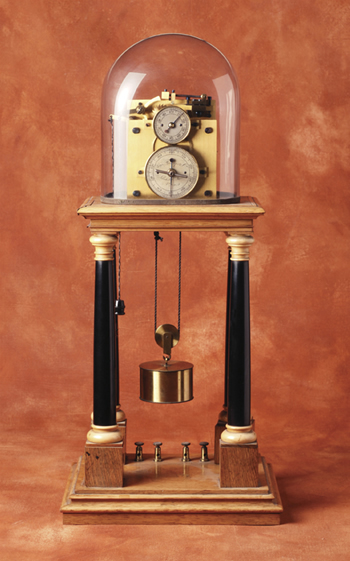Though it may not always feel like it, our brains work pretty fast. So fast, in fact, that until the late 19th century, scientists had no accurate way of measuring the speed of psychological processes. The Hipp chronoscope dramatically advanced the precision of psychological research.
The device was invented by Swiss watchmaker Mathias Hipp. Capable of measuring time to 1-1000th of a second, it was first used by scientists to assess how quickly people responded to stimuli. “What you did was stimulate someone’s arm up toward the shoulder, and measure how rapidly they could respond,” says Douglas Creelman, a retired psychology professor who rediscovered this chronoscope in the late 1960s. “It gave a fairly accurate measure of the speed of nerve transmission.”
In the 1870s, some psychologists began using the Hipp chronoscope to study mental chronometry – in essence, the speed of thought. Researchers would give subjects a baseline test to measure how quickly they reacted to a sensory stimulus, such as a flash of light. Then the researchers would give a test involving decision-making skill (for example, subjects would indicate instantly if a sound was low- or high-pitched). In simplest terms, the time difference between the two tests represented the time “thought” took.
This chronoscope was purchased in 1890 by James Baldwin, the founder of U of T’s psychology lab, for $87. It was destined for the landfill when Creelman rescued it during a renovation of Sidney Smith Hall. In 1997, the chronoscope was loaned to the Ontario Science Centre, and there it remains today, counting the seconds until it returns home.
Recent Posts
For Greener Buildings, We Need to Rethink How We Construct Them
To meet its pledge to be carbon neutral by 2050, Canada needs to cut emissions from the construction industry. Architecture prof Kelly Doran has ideas
U of T’s 197th Birthday Quiz
Test your knowledge of all things U of T in honour of the university’s 197th anniversary on March 15!
Are Cold Plunges Good for You?
Research suggests they are, in three ways





